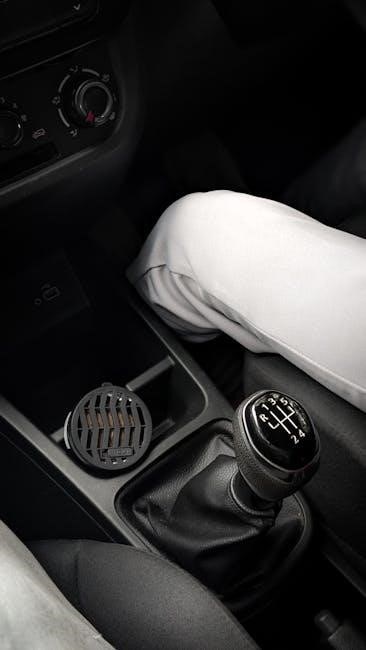Manual transmission swaps offer enhanced driver control and performance but come with varying costs․ Factors like parts, labor, and vehicle specifics influence the total expense, ranging widely․
What is a Manual Transmission Swap?
A manual transmission swap involves replacing an automatic gearbox with a manual transmission in a vehicle․ This process is often pursued by enthusiasts seeking better performance, control, and driving engagement․ It requires removing the existing automatic transmission and installing a compatible manual unit, along with necessary components like the clutch, flywheel, and shift linkage․ The swap can enhance acceleration, reduce weight, and improve fuel efficiency, depending on the setup․ However, it also demands mechanical expertise and additional modifications to ensure proper integration with the engine and chassis․ Costs vary widely based on the vehicle, transmission choice, and labor involved, but it’s a popular modification for those prioritizing driver involvement and tactile feedback behind the wheel․
Why Consider a Manual Transmission Swap?
A manual transmission swap is often pursued for enhanced performance, driver engagement, and cost savings․ Manual transmissions typically offer better fuel efficiency, lower maintenance costs, and superior control over the vehicle․ For enthusiasts, the tactile experience of shifting gears manually is unbeatable, providing a more connected driving experience․ Additionally, manual transmissions are generally lighter and simpler in design, which can improve acceleration and reduce weight․ In some cases, swapping to a manual transmission can also increase the resale value of certain vehicles, particularly performance-oriented models․ However, the decision to swap often depends on the driver’s preference for a more hands-on driving style and willingness to invest in the required modifications and labor․
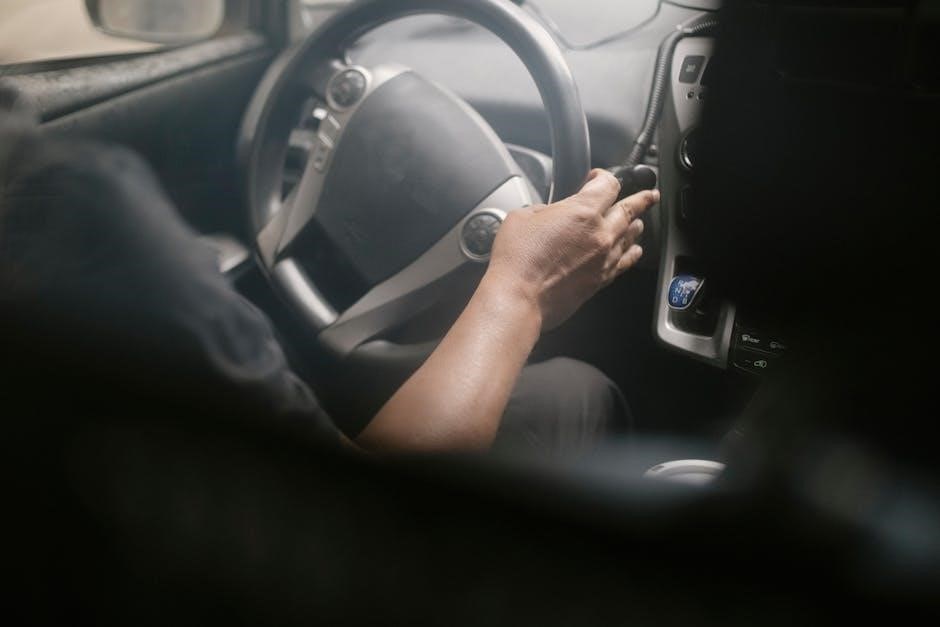
Factors Affecting the Cost of a Manual Swap
Labor costs, parts availability, and vehicle-specific requirements significantly influence the total expense․ Mechanic expertise, transmission type, and additional components like clutch and flywheel also play a role․
Labor Costs and Mechanic Expertise
Labor costs significantly influence the total expense of a manual swap, varying based on the mechanic’s expertise and workshop rates․ Experienced specialists charge more due to their skill level, ensuring precise installation and avoiding costly errors․ Additionally, the complexity of the swap, such as retrofitting components or resolving compatibility issues, increases labor time․ For instance, a Ford Focus manual swap retaining advanced features required specialized knowledge, raising labor costs․ Mechanic expertise is crucial for a seamless transition, especially with modern vehicles, where electrical and software adjustments are often necessary․ High-end sports cars, like the Audi R8, may demand premium labor due to their sophisticated manual transmissions․ Thus, labor costs can range widely, reflecting both the mechanic’s proficiency and the project’s complexity․
Cost of Parts and Components
The cost of parts and components is a significant portion of the manual swap expense․ A replacement manual transmission can range from $1,500 to $4,000 or more, depending on the make, model, and quality․ The clutch and flywheel, essential for the swap, typically add $500 to $1,500․ Additional components like the shifter, transmission mounts, and hydraulic systems can add another $300 to $800․ For vehicles requiring custom adapters or crossmembers, these can cost between $200 and $1,000․ Used or refurbished parts may lower costs but could require extra labor for inspection or refurbishment․ High-performance or rare parts can increase expenses․ Proper planning is crucial to avoid overspending on unnecessary components․
Vehicle-Specific Considerations
Vehicle-specific considerations play a crucial role in determining the cost of a manual swap․ Certain car makes and models, such as older Honda Civics or BMWs, are more popular for swaps due to their compatibility with aftermarket transmissions and readily available parts․ For example, a Toyota 86 or Subaru BRZ swap may be more affordable due to strong aftermarket support, while a Porsche 911 swap could be significantly more expensive due to limited options and higher labor costs․ Additionally, some vehicles may require custom adapters or wiring harnesses, increasing expenses․ The year and engine type of the car also influence costs, as newer models with advanced electronics may need additional modifications․ Always research your specific vehicle to understand unique challenges and expenses․
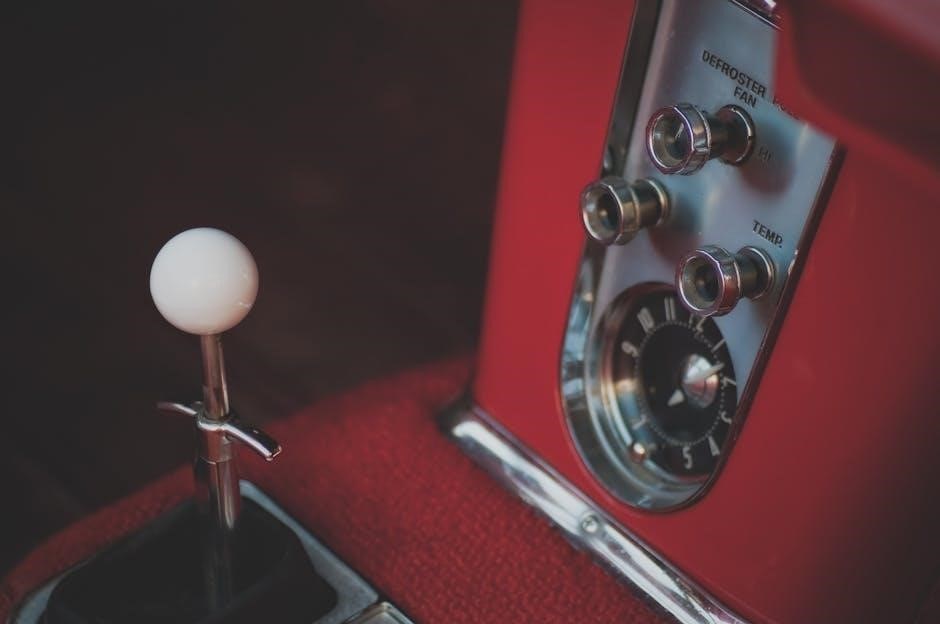
Breakdown of Costs
A manual swap’s cost includes transmission replacement, clutch, flywheel, adapters, and labor․ Prices vary by vehicle make, model, and transmission type, ranging from $2,000 to $5,000 or more․
Transmission Replacement Costs
The cost of replacing an automatic transmission with a manual one varies widely, typically ranging from $1,500 to $4,000, depending on the vehicle and transmission type․ Used transmissions can cost between $500 and $2,000, while new units may range from $2,000 to $5,000․ For high-performance or specialized transmissions, such as the Toyota Supra’s Getrag 360 or the Honda Civic Type R’s 6-speed, prices can exceed $3,000․ Additionally, the transmission kit may include essential components like the bellhousing, mounts, and adapters, which can add $500 to $1,000 to the total․ Labor costs for installation are separate and depend on the mechanic’s expertise and location․
Clutch and Flywheel Replacement Costs
Replacing the clutch and flywheel is a critical part of a manual swap, with costs ranging from $800 to $2,000, depending on the vehicle and components․ A standard clutch kit, including the clutch disc, pressure plate, and bearing, typically costs between $300 and $800․ Performance or heavy-duty clutches can range from $800 to $1,200․ The flywheel, which may need to be resurfaced or replaced, adds another $100 to $600, depending on whether it’s refurbished or brand new․ Labor costs for clutch and flywheel installation can range from $400 to $800, depending on the mechanic’s rates and the car’s make․ These costs are in addition to the transmission replacement expenses․
Additional Parts and Accessories
Beyond the transmission and clutch, additional parts like shifters, mounts, and hydraulic systems may be needed, costing $500 to $2,000․ These components ensure proper installation and functionality․ For example, a shifter assembly or crossmember can range from $200 to $800, while hydraulic slave cylinders or master cylinders add $150 to $400․ Driveshaft modifications or adapters may also be required, costing $300 to $1,000․ Labor for installing these extras can add $500 to $1,500, depending on complexity․ Model-specific parts may increase costs further․ These expenses are crucial for a seamless swap, as skipping them can lead to poor performance or mechanical issues․ Always research vehicle-specific requirements to avoid unexpected costs․
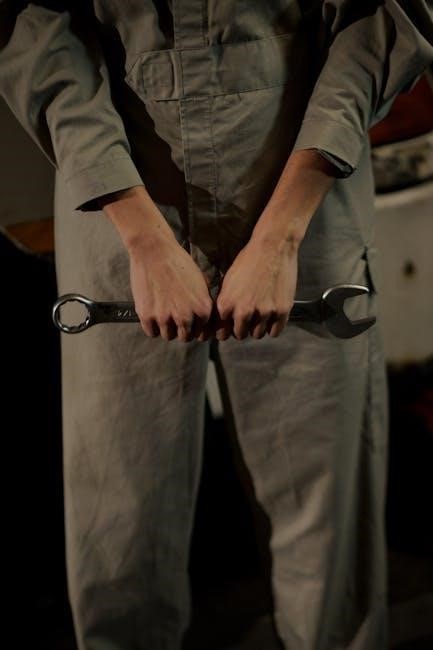
Labor and Installation Costs
Labor costs for manual swaps range from $500 to $2,000, depending on mechanic expertise and location․ Specialist shops may charge up to $3,000 for complex installations․
Average Labor Rates for Manual Swaps
Average labor rates for manual transmission swaps typically range between $75 to $150 per hour, depending on the mechanic’s expertise and location․ In the U․S․, labor costs generally fall between $750 and $2,250 for a 10- to 15-hour job․ However, complex swaps requiring custom work or advanced mechanical skills can exceed $3,000 to $4,500․ Urban areas and specialist shops often charge higher rates, while rural or independent mechanics may offer lower pricing․ Factors such as the transmission’s compatibility, the vehicle’s make, and additional modifications also influence the total labor cost․ It’s essential to consult with a trusted mechanic to get an accurate estimate tailored to your specific project․
Factors Influencing Labor Costs
Labor costs for manual transmission swaps are influenced by several factors, including the mechanic’s experience, workshop rates, and the complexity of the job․ Dealerships typically charge higher rates compared to independent shops due to overhead costs․ The vehicle’s make and model also play a role, as certain cars may require specialized tools or additional time․ Additionally, the condition of the vehicle and whether custom work is needed, such as wiring or adapter plate installation, can increase labor costs․ In some cases, the need for alignments or adjustments post-installation may also add to the total labor expense․ These variables make it essential to obtain detailed quotes from multiple sources to compare pricing and services accurately․
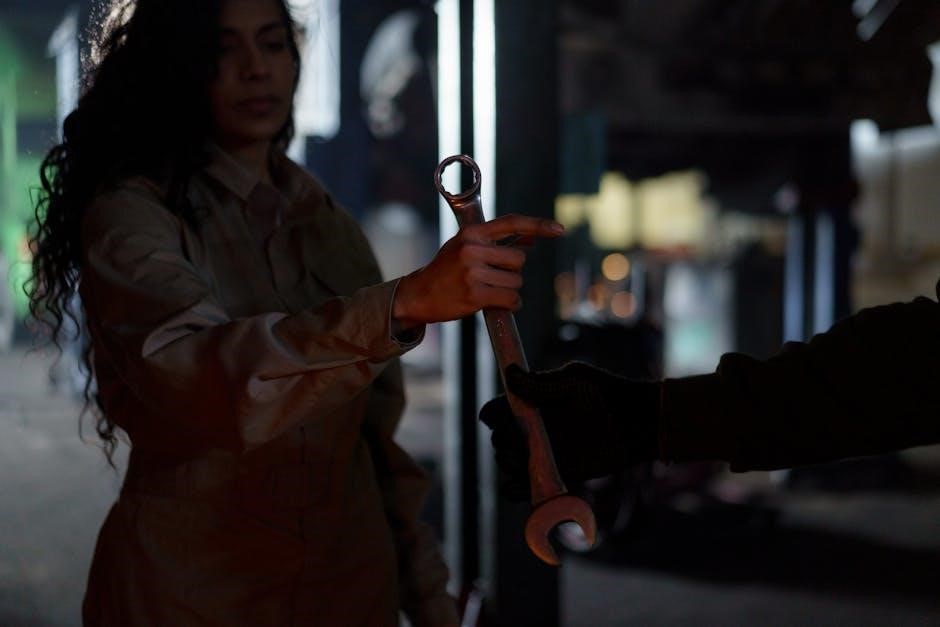
Vehicle-Specific Costs
Costs vary depending on the vehicle’s make, model, and specific requirements․ Some cars may need additional components like adapter plates or custom axles, increasing the total expense․
Popular Models for Manual Swaps
Popular models for manual swaps include the Honda Civic, Toyota Corolla, and Ford Mustang, which are often chosen for their aftermarket support and ease of modification․ The Subaru Impreza and Mazda Miata are also favorites due to their sporty nature․ These models typically have readily available parts and strong enthusiast communities, reducing costs and simplifying the process․ However, the overall cost varies depending on the specific model and transmission chosen․ For example, swapping a Honda Civic Type R with a high-performance manual transmission can be more expensive due to specialized components․ Researching forums and guides specific to your vehicle can provide more precise cost estimates and tips for a successful swap․
Cost Variations by Car Make and Model
Cost variations for manual swaps depend significantly on the car’s make and model․ Luxury brands like BMW and Mercedes often incur higher costs due to expensive parts and specialized labor․ Japanese models, such as Toyota and Honda, tend to be more affordable, with widespread aftermarket support reducing expenses․ Domestic brands like Ford and Chevrolet may fall in the middle, with costs varying based on transmission compatibility․ Performance-oriented cars, such as the Subaru WRX or Mazda Miata, might require custom parts, increasing the total cost․ Additionally, older models may need more extensive modifications, while newer cars could have stricter electronic systems․ Always research your specific vehicle to get accurate estimates, as prices can fluctuate widely between makes and models․
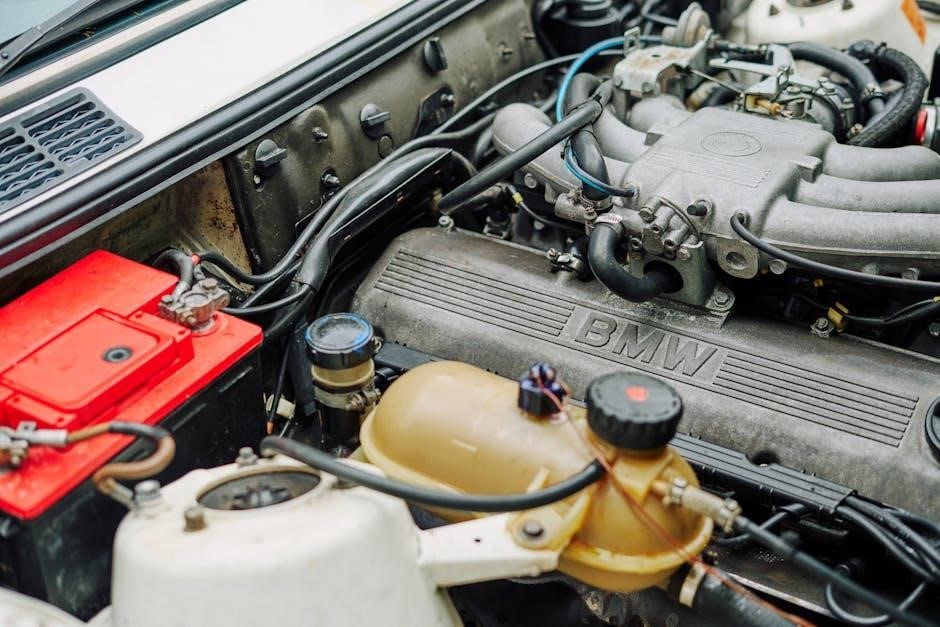
Additional Expenses to Consider
Additional expenses may include engineering fees for custom fabrication, inspection fees, and potential costs for specialized tools or unforeseen modifications during the swap․
Engineering and Custom Fabrication
Engineering and custom fabrication costs arise when modifications are needed to adapt the manual transmission to your vehicle․ This may include designing custom mounts, axles, or crossmembers to ensure proper fitment and functionality․ These expenses can range from $500 to $2,000, depending on the complexity of the work․ If the transmission requires special adapters or drivetrain components, additional fabrication fees may apply․ Costs vary by vehicle make and model, as well as the availability of off-the-shelf parts․ While this adds to the initial investment, it ensures compatibility and prevents future mechanical issues․ Proper engineering is critical for a successful swap, even if it increases the overall cost․
Inspection and Testing Fees
Inspection and testing fees are crucial for ensuring a manual swap is executed correctly․ Typically, these fees cover the evaluation of the transmission installation, gear functionality, and overall drivetrain performance․ Costs range from $200 to $600, depending on the mechanic’s expertise and the thoroughness of the inspection․ These fees may include pre-installation checks to verify transmission compatibility and post-installation tests to assess driveability and system integrity․ Some shops may charge separately for diagnostics or special tools required for certain transmissions․ While these fees add to the upfront cost, they ensure reliability and safety, potentially preventing costly issues down the road․ Always inquire about what’s included to avoid unexpected charges․ Proper inspection and testing are vital for a successful and durable manual transmission swap․
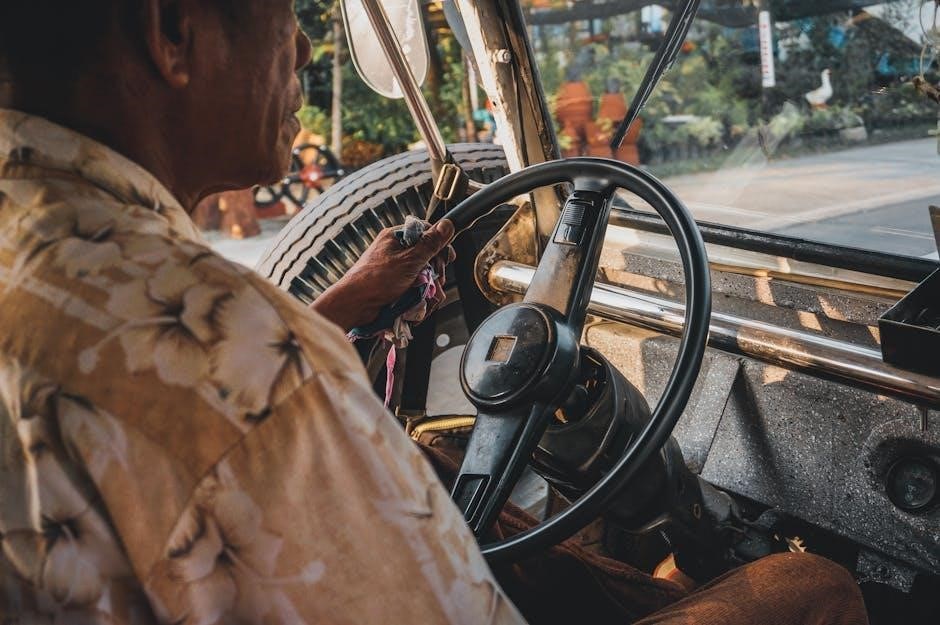
Benefits of a Manual Transmission Swap
A manual swap enhances driving experience by offering better control, improved fuel efficiency, and lower maintenance costs․ It also boosts performance and increases resale value for enthusiasts․
Improved Performance and Control
A manual transmission swap significantly enhances a car’s performance and driving dynamics․ It provides direct control over gear shifts, allowing drivers to optimize acceleration and deceleration․ Unlike automatic transmissions, manuals eliminate torque converter slippage, delivering more horsepower and torque directly to the wheels․ This results in faster acceleration and improved responsiveness, especially during spirited driving․ Additionally, manuals often improve fuel efficiency, as drivers can control engine RPMs more effectively․ The connection between the driver and the vehicle becomes more tactile, offering better feedback and precision․ For enthusiasts, this translates to a more engaging and enjoyable driving experience, making manual swaps a popular choice for performance-oriented upgrades․
Cost Savings on Fuel and Maintenance
A manual transmission swap can lead to noticeable cost savings over time․ Manual transmissions are generally more fuel-efficient than automatics, especially in city driving, as they allow drivers to control gear shifts and optimize engine RPMs․ This can result in better mileage per gallon, reducing fuel expenses․ Additionally, manual transmissions have fewer complex components, leading to lower maintenance and repair costs․ They also tend to have longer lifespans, with fewer parts requiring replacement․ Furthermore, insurance premiums may be lower for vehicles with manual transmissions, as they are often cheaper to repair․ Overall, a manual swap can provide long-term financial benefits, making it a practical choice for cost-conscious drivers․
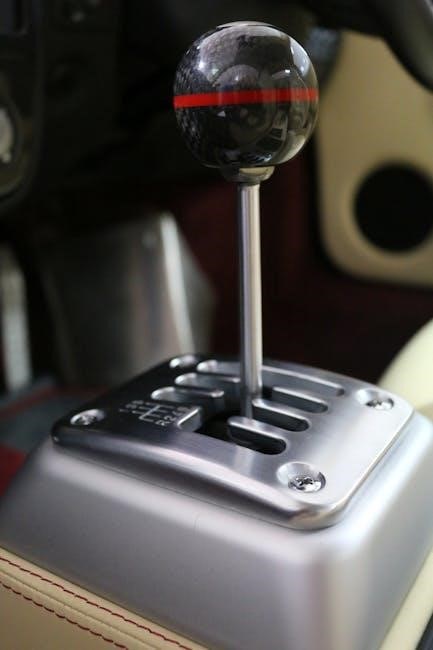
Common Mistakes to Avoid
Common mistakes include incorrect transmission compatibility, overlooking additional components, and underestimating labor complexity․ Proper planning and expert consultation are crucial to avoid costly errors․
Incorrect Transmission Compatibility
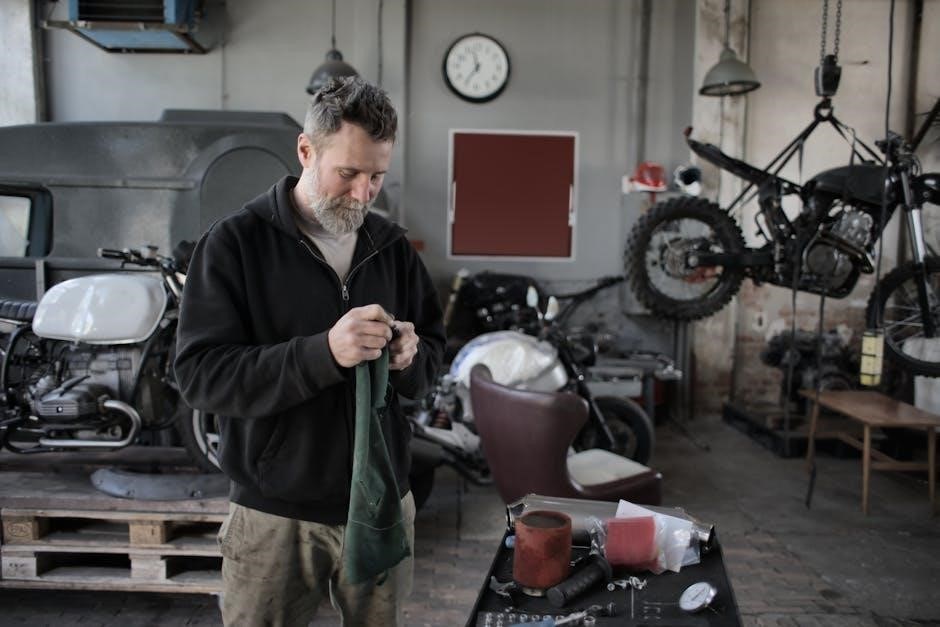
One of the most critical mistakes is installing a transmission incompatible with the vehicle’s make, model, or engine․ This can lead to mechanical failures, safety hazards, and costly rework․ Compatibility issues arise when the transmission’s gear ratios, mounting points, or electronic controls do not align with the car’s specifications․ For example, a transmission designed for a rear-wheel-drive vehicle may not function properly in a front-wheel-drive car․ Incorrect compatibility can also void warranties and cause drivetrain damage․ Always cross-reference the transmission with the vehicle’s specifications and consult a professional to ensure proper fitment․ This oversight can add thousands to the swap cost and delay completion significantly․
Overlooking Additional Components
Another common mistake is neglecting to account for essential components beyond the transmission itself․ A manual swap often requires replacing the clutch, flywheel, and pilot bearing, as these must align with the new transmission․ Additionally, the drivetrain, mounts, and shifter may need upgrades or adjustments․ Modern vehicles may also require modifications to the electronic control systems, such as the ECU or wiring harness, to ensure compatibility with the manual transmission․ Overlooking these components can lead to increased costs, extended downtime, and potential damage to the vehicle․ Always create a comprehensive list of required parts and consult a professional to avoid surprises․ Proper planning ensures a smooth and cost-effective swap․

Step-by-Step Process of a Manual Swap
A manual swap involves pre-swap planning, removing the old transmission, installing the new one, reconnecting components, and testing the system․ Ensure proper alignment and functionality each step․
Pre-Swap Planning and Preparation
Before starting a manual swap, thorough planning is essential․ Research the correct transmission for your vehicle, ensuring compatibility with the engine, chassis, and electronics․ Gather tools and parts, including a transmission jack, clutch kit, and adapters․ Inspect the car’s condition to identify any additional repairs needed․ Consult a factory service manual or online forums for guidance․ Measure your mechanical skill level and decide if professional help is required․ Create a budget that includes parts, labor, and unexpected expenses․ Finally, clear workspace and prepare for the project’s time commitment․ Proper preparation ensures a smoother and more cost-effective swap process․
Installation and Testing
Installation involves removing the old transmission and replacing it with the manual unit․ This requires careful alignment and securing of the new transmission․ The clutch and flywheel are installed next, ensuring proper mating with the engine․ Electrical and hydraulic connections are then reattached, including the clutch master and slave cylinders․ Modern cars may require reprogramming the ECU to recognize the manual setup․ After installation, a test drive is essential to check for proper gear engagement and clutch operation․ Listen for unusual noises or slipping, which could indicate issues․ A final inspection of all connections and fluid levels ensures everything is secure․ Patience and attention to detail are critical during this phase to guarantee reliability and performance․
A manual swap is a significant investment but can be highly rewarding, offering improved performance, control, and long-term cost savings on fuel and maintenance․
Final Thoughts on Manual Transmission Swaps
Is a Manual Swap Worth the Investment?
Whether a manual swap is worth the investment depends on your priorities․ For driving enthusiasts, the improved control, performance, and engagement often outweigh the costs․ If you value a more connected driving experience and potential fuel savings, it can be a rewarding modification․ However, for those prioritizing convenience or with limited budgets, the investment may not justify the benefits․ Long-term maintenance savings and the satisfaction of driving a manual can also influence the decision․ Ultimately, it’s a personal choice balancing cost, driving preferences, and vehicle goals․ If you’re passionate about driving dynamics, a manual swap is likely worth considering, especially if you plan to keep the car long-term․
